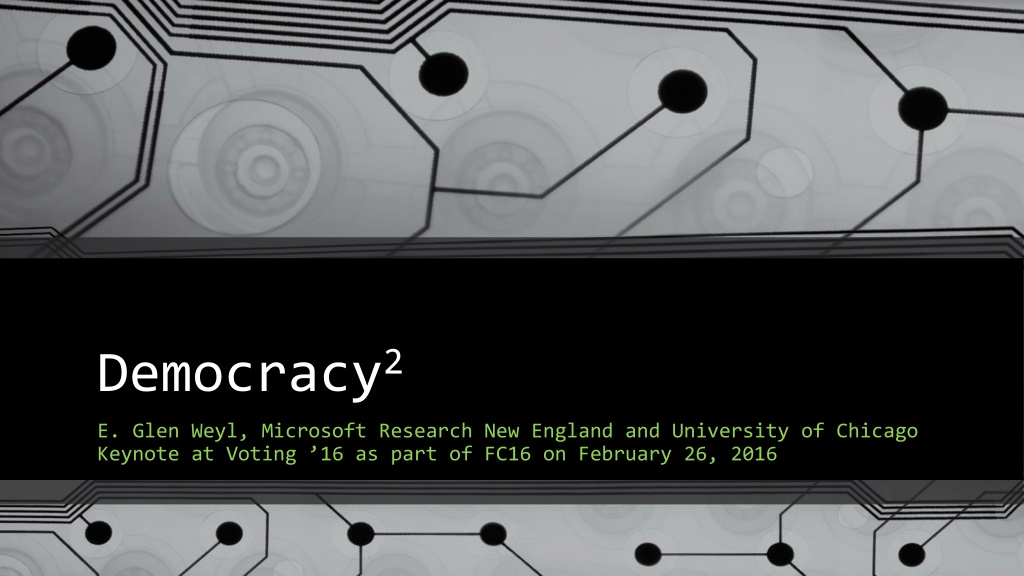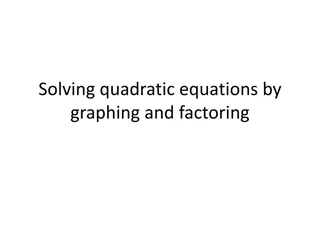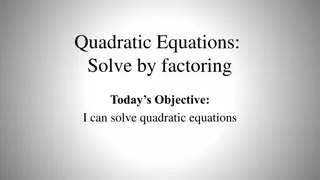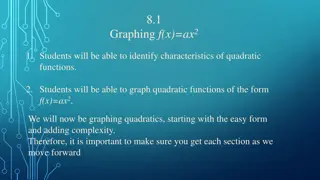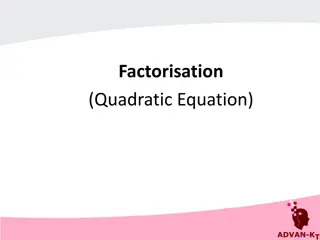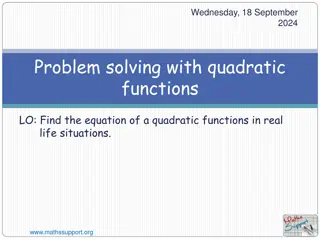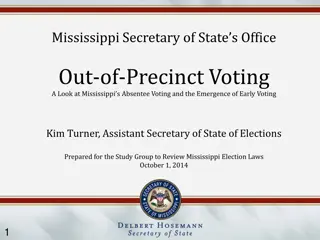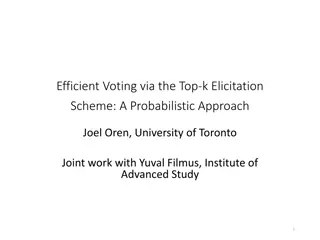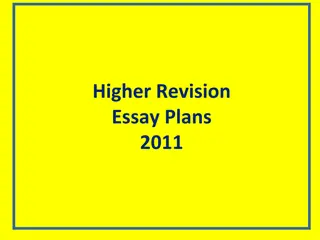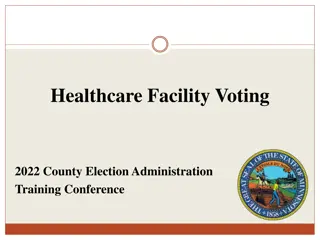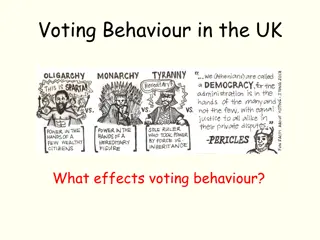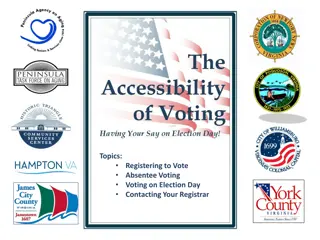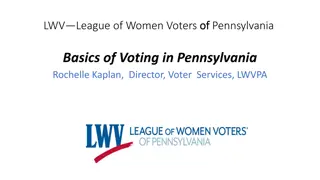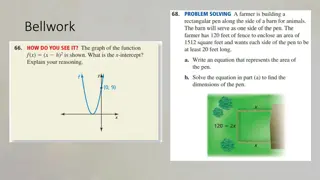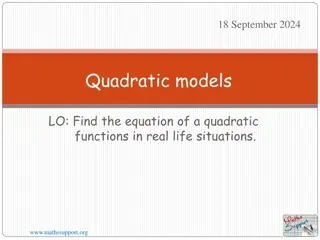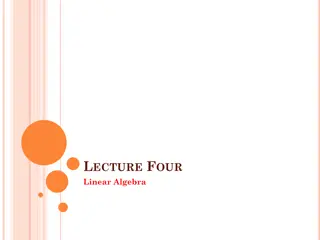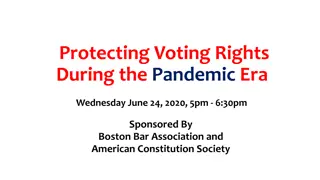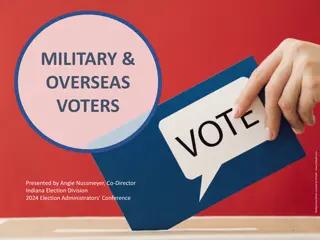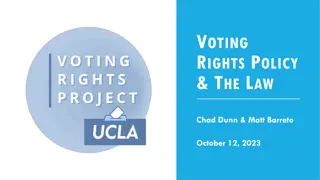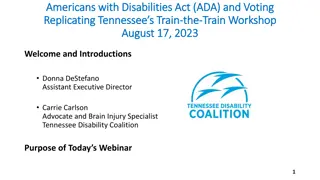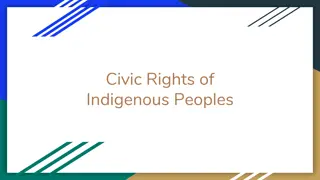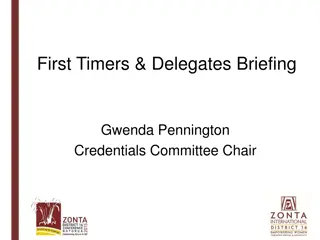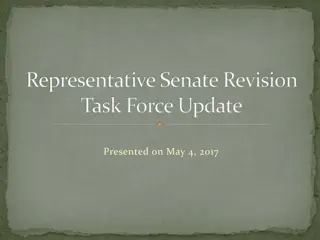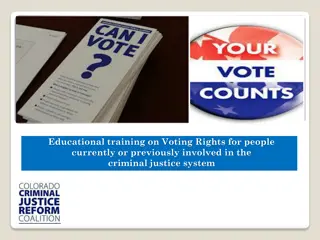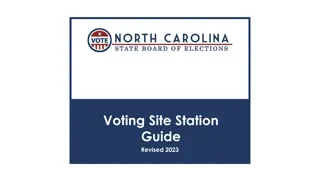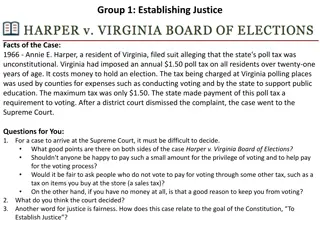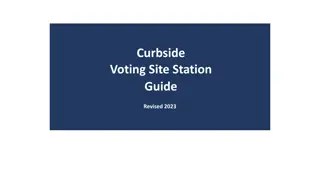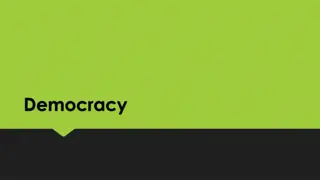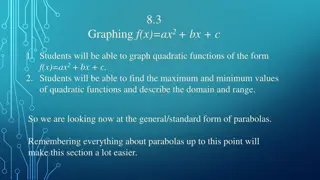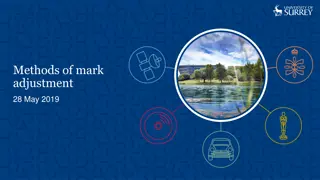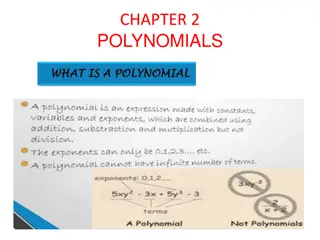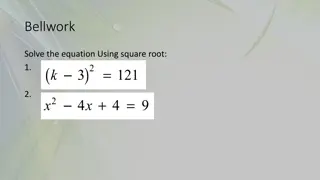Quadratic Voting: A New Approach to Decision-Making
Glen Weyl explores the concept of Quadratic Voting, where individuals assign cardinal values to outcomes, engaging in a democratic process where noise ensures smoothness. The model optimizes efficiency based on marginal benefit and cost of voting, presenting formal results and practical applications in various environments.
Download Presentation

Please find below an Image/Link to download the presentation.
The content on the website is provided AS IS for your information and personal use only. It may not be sold, licensed, or shared on other websites without obtaining consent from the author. Download presentation by click this link. If you encounter any issues during the download, it is possible that the publisher has removed the file from their server.
E N D
Presentation Transcript
Democracy2 E. Glen Weyl, Microsoft Research New England and University of Chicago Keynote at Voting 16 as part of FC16 on February 26, 2016
Plan for talk I. Basic results A. Intuitions B. Formal result overview for various environments II. Where we hope to apply this A. Long-term vision B. Short-term commercialization III. Security issues A. Results on robustness to collusion and fraud B. Unique challenges for preventing
Model ? individuals have cardinal value 2??for outcome 1 relative to 0 in currency ?? ? on (?,?) 0 with mean ?, variance ?2, raw 3rd?3 Quadratic Voting: Everyone chooses real ?? 2in currency, with arbitrary balancing refund 1. Pays ?? Outcome determined by majority rule in ??( ???> 0), but with noise for smoothness 2. 3. Normalize expected inefficiency ?? to be between 0 and 1 and linear in total realized welfare
Heuristic argument Marginal benefit of voting 2??, where ? is chance of being pivotal Marginal cost of voting 2? Optimum ? = ?? Thus if everyone perceives same ? > 0 then ? ? and thus sign of ???same as ???, implying efficiency Clearly would not occur for ?4(or any other power): ? 3?, quadratic unique
Formal results and alternatives Of course ? not literally constant and exact behavior depends on model In simple IID, perfectly rational model above, fully formal proof (big mess of work!) that in any equilibrium ?? 0 as (joint with statistician Steven P. Lalley) 1?; approximately same ? for almost all Yet this model makes many unrealistic assumptions: 1. Perfect rationality and instrumentality As long proportionality between value and votes uncorrelated with values, still limit efficient, sometimes even more than with rationality 2. Value distribution known for certain With aggregate uncertainty some disagreement of pivotal chances so imperfect but v close 3. Large population Even with small populations always above 95% Even more important: manipulations. Return to this below.
Range of applications Obvious application broad-scale democracy but also Voting on land assembly/eminent domain (w Jerry Green and Scott Duke Kominers) Participatory budgeting Corporate governance and bankruptcy (with law professor Eric Posner) Social aggregation online (likes, reddit, credit for academics) Massive multiplayer online video games International organizations Funding public goods (innovation, political campaigns, etc.) with matching
Ladder strategy Long-term applications complicated, politically difficult: start w feasible/commercial 1. Short-term commercial: Collective Decision Engines 2. Medium-term: large scale private and small scale public 3. Long-term: large scale public Use familiarity, commercial success to open minds, validate, improve
Collective Decision Engines Focusing initially on market research/polling; friends and family stage Founders: Eric Posner (Chicago law), Kevin Slavin (MIT media lab) and me Advisers: Ellen Konar (former head of MR at Google), Eric Maskin (Nobel in Econ) Based in NYC, ~2 full time employees weDesign software
Preliminary empirical results QV appears to turn multimodal or otherwise weird Likert distributions of preferences into bell-shaped, normalish distributions. QV does a much better job predicting behavior, as gauged by willingness to sign up for emails about issues. QV yields interesting new insights about which aspects of preferences moderate, and which do not, when placed under budget constraint.
Implementations 1. Binary, one-shot referendum (only with money) 2. Multicandidate one-shot race 3. Prioritization 4. Many simultaneous binary issues (as in software) 5. Resource allocation 6. Repeated elections with persistent, storable currency
Collusive and fraudulent environments All formal analysis of collusion in first case, with basic assumptions Consider collusion (vote buying) and fraud (pretending to multiple identities) Consider average and worst case collusive groups, and defrauders Different informational environments (collusive group has or not perfect internal monitor, is or is not monitored by private citizens, the state) Basic intuition: can overcome convexity, internalize benefit to others But limits with small numbers as still gets convex quickly and if public expects it reacts, can make self-defeating
Results on collusion and fraud Bad cases: Worst case (group of most extreme) colluders without any public monitoring Very large number of colluders in any case (when government cannot catch) Very large scale fraud Good cases: Average colluders in any case Any case where public knows may exist (even if don t know specific case) Any case there are constant number of colluders in large population
Security challenges Hard to have secret ballot; how to conceal payments? (with money) How to prevent people giving others money to use on voting? (with money) Avoiding some people having better sense of chance of tie than others (all systems) Better or worse with persistent artificial currency? Verifying that cardinal not just ordinal votes untampered harder or easier?
Future research I am working on academic, commercial and public sides Chief Research Officer for CDE Writing book Democracy2for popular audience Academic papers on robustness, small populations, eminent domain application, corporate bankruptcy application and general equilibrium version Also trying to encourage work by others Conference at Chicago in April with scholars for many disciplines: classics, history of economic thought, law, etc. Sunoo Park and Ron Rivest will present something But many other challenges and we need as much help as we can get!
